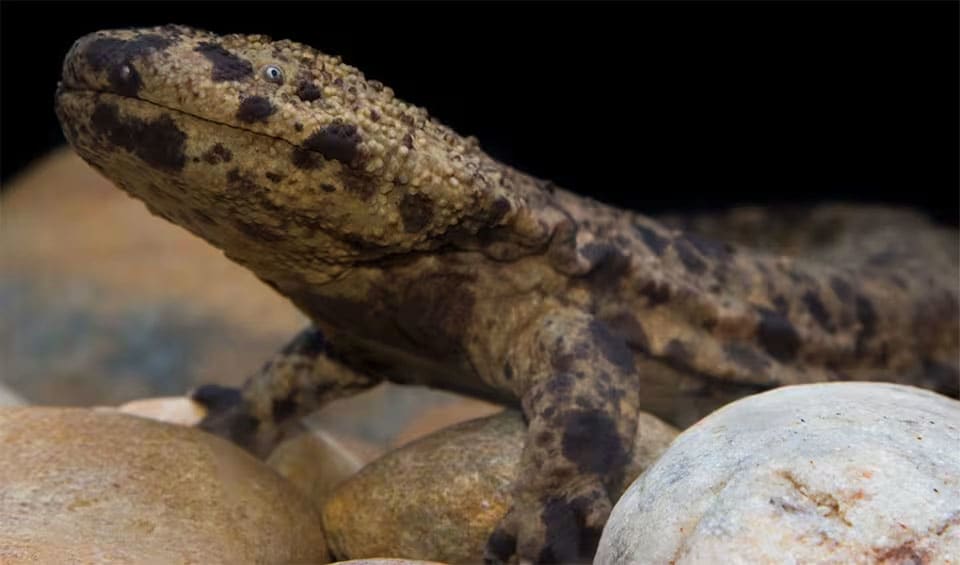This giant salamander is primarily found in Japan’s cool, clear mountain streams and rivers, specifically in the regions of Honshu, Shikoku, and Kyushu. It prefers habitats with abundant cover, such as rocks, submerged logs, and dense aquatic vegetation, which provide shelter and hunting grounds. Its presence is often an indicator of a healthy, unpolluted aquatic ecosystem.
One of the most striking features of the Japanese giant salamander is its size. Adults can grow up to 1.5 meters (5 feet) in length and weigh as much as 25 kilograms (55 pounds), making them one of the largest amphibians in the world. They have a robust, flattened body covered in a mottled pattern of dark brown and black, which helps them blend into their rocky, aquatic surroundings. Their wrinkled skin contains numerous glands that secrete sticky mucus, protecting against parasites and predators. The salamander’s broad, flat head houses small eyes and a wide mouth filled with numerous small, sharp teeth.
The Japanese giant salamander is a nocturnal predator that emerges at night to hunt for food. Its diet consists mainly of fish, crustaceans, insects, and other small aquatic organisms. These salamanders are opportunistic feeders that use a sit-and-wait strategy to ambush their prey. With their excellent sense of smell and touch, they detect movements in the water and strike swiftly, engulfing their prey with a rapid snap of their powerful jaws.
They spend most of their lives hidden under rocks or submerged logs, venturing out at night to hunt. Their wrinkled skin increases surface area for cutaneous respiration, allowing them to absorb oxygen directly from the water. This adaptation is crucial for their survival in fast-flowing streams where oxygen levels are high. Additionally, their flattened body shape and muscular limbs enable them to navigate swiftly through the water and cling to submerged surfaces.
Distribution
 Japan
JapanAnything we've missed?
Help us improve this page by suggesting edits. Glory never dies!
Suggest an editGet to know me
Terrestrial / Aquatic
Altricial / Precocial
Polygamous / Monogamous
Dimorphic (size) / Monomorphic
Active: Diurnal / Nocturnal
Social behavior: Solitary / Pack / Herd
Diet: Carnivore / Herbivore / Omnivore / Piscivorous / Insectivore
Migratory: Yes / No
Domesticated: Yes / No
Dangerous: Yes / No




